The
Valley of Wine
Tracey Lalonde
(Photos by Tracey Lalonde & Phil Maranda)
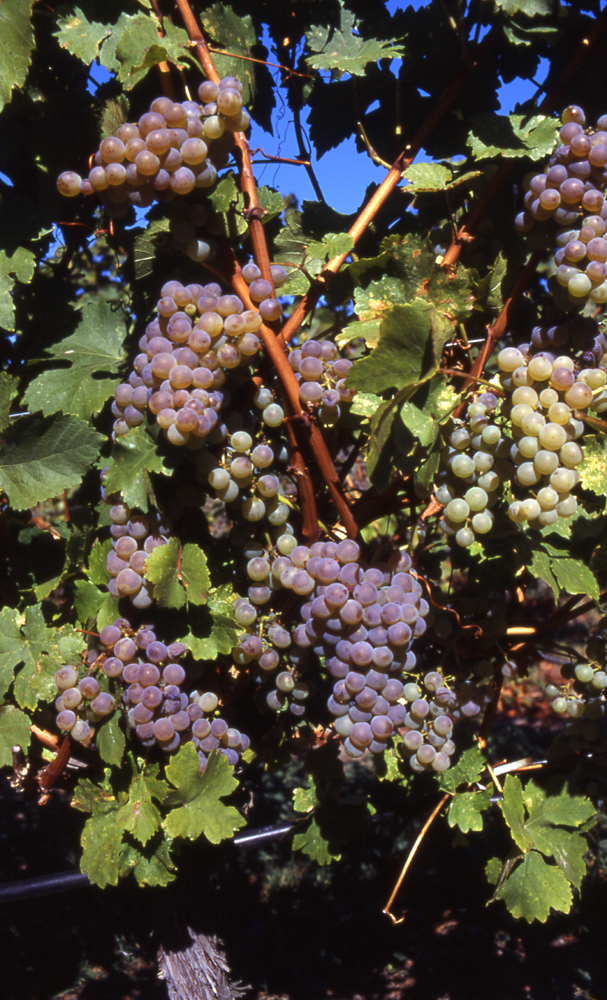
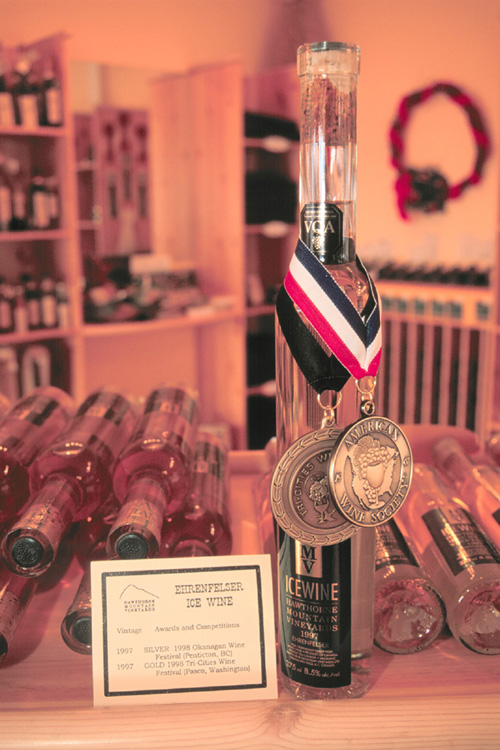
Just across the U.S. border, huddled against the state of Washington,
lies the largest and oldest wine-producing region in British Columbia
(2nd in Canada)—a valley famous for its homegrown varieties of wine.
In the 1860’s, this picturesque area gave birth to the first vineyard
in BC, and the 1930’s saw the establishment of its first winery.
Today, winning awards worldwide, the Okanagan Valley’s 40-plus wineries
dot its expanse of lush vineyards and rich, green hills, overlooking four
shimmering fresh-water lakes and a string of friendly towns.
The southern end of the Okanagan Valley shares not only Osoyoos Lake with
its American neighbors but also its semi-desert climate. In fact, it’s
an extension of the Great Basin Desert which stretches across the Continental
U.S. into Mexico. (The “southwestern” town of Osoyoos houses
Canada’s only pocket desert.) An abundance of sunlight balanced
with less than six inches of precipitation per year and superb soil in
the South Okanagan makes for a perfect recipe for world-class wines.
Osoyoos leads the way into wine country, extending through part of the
“Golden Mile” which is a stretch of vineyards it shares with
the town of Oliver. Oliver’s north side meets with the settlement
of Okanagan Falls then follows to the largest town in the south, Penticton
(housing approximately 32,000 residents including its surrounding communities),
then on to Summerland; each area boasts its own collection of wineries.
Summerland is where the desert plants and hoodoos begin to trickle off
and where the forest shrubs and greenery start to take their place.
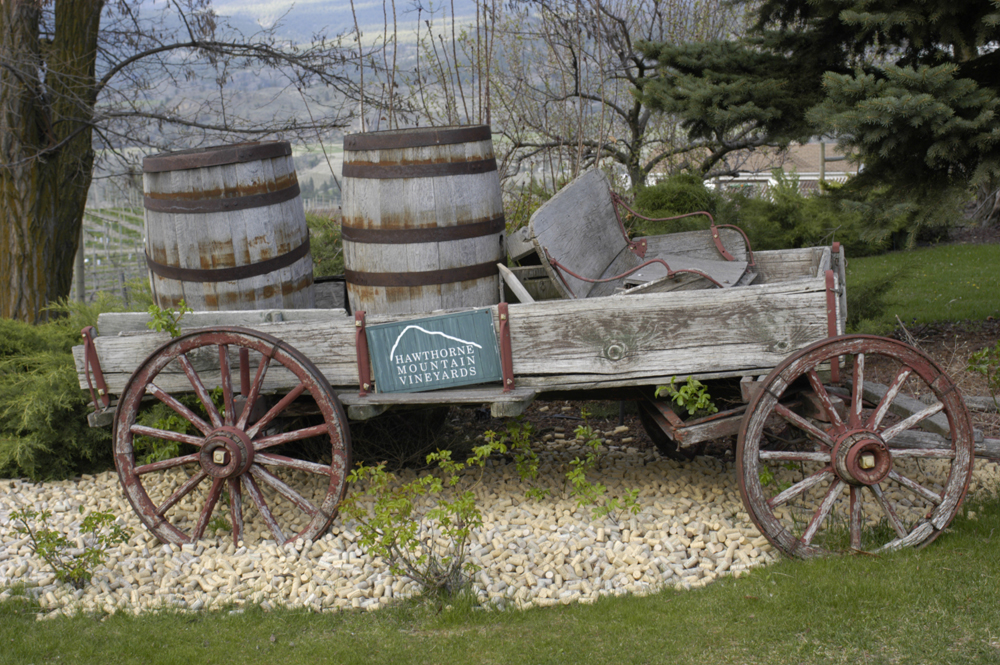
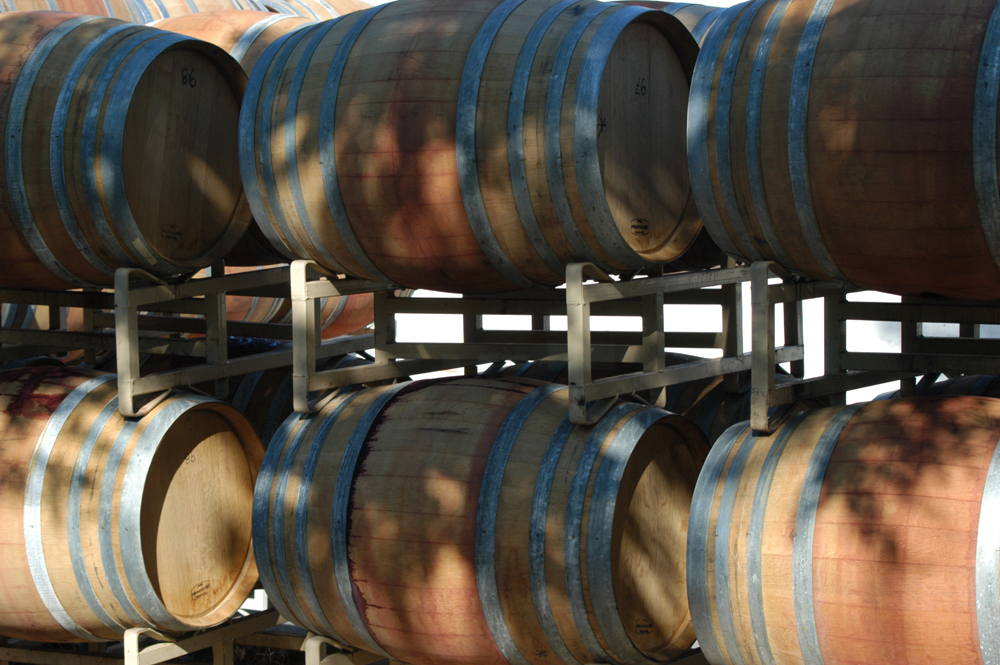
There are at least 23 wineries in this desert oasis of the South
Okanagan (with more cropping up each year), surrounded by tree-laden hillsides,
creeks and rivers, clay banks, orchards, and rocky bluffs. They constitute
a mixture of intimate and large-scale wineries, each creating its own
unique fruity blends of wine.
Wine tours and cozy bistros with stunning views of the vineyards and surrounding
mountains await guests in the warm, dry climate of the south. Bike tours,
such as the Tour de Vine—via much of the cross-Canada, Trans-Canada
Trail—take ambitious visitors up and down paths, from vineyard to
vineyard and tasting room to tasting room.
Next on the list is the town of Peachland which leads the way through
the North Okanagan to Westbank, then over the Okanagan Lake’s floating
bridge to Kelowna—the “city” of the valley, with over
100,000 residents living in and around its busy interior—then next
to Vernon, the last stop on the Okanagan Valley wine tour. Each town upholds
a pride about its award-winning wineries and world-class wines.
The north end of the valley is home to more than a dozen wineries and
Father Pandosy Mission, a heritage site where the valley’s first
grapes were planted more than 150 years ago. French and Germanic white
grape varieties flourish in the scenic North Okanagan which receives less
than 16 inches of rainfall a year. Gone is the desert climate of the south
end of the valley; in its place is a cooler climate with an abundance
of trees and vegetation similar to those found in alpine wilderness areas.
Vineyards, beaches, and parks are also plentiful, as are orchards—the
entire valley has been long been known for its selection of mouth-watering
fruit, hence the marvelous fruity combinations of its wines.

Ice wine, a popular dessert wine made from frozen grapes hand-picked
at a minimum of 17.5 degrees F (-8 degrees Celsius) is famous in the Okanagan
valley. The first bottle ever to be made in BC was created by Walter Hainle
in the town of Peachland in 1973. Hainle Vineyard Estate Winery still
exists today in Peachland which marks the border between the South Okanagan
and the North Okanagan.
Wine tours and tastings are equally as popular on the north side as are
quaint restaurants which serve up delicious meals in old-style, comfortable
rooms or open patios with endless views of lustrous grapes, some with
the 100-mile expanse of the Okanagan Lake as a glittering backdrop. The
nearby walking/biking trails wind through spanning vineyards and forest
terrain surrounded by the mountainous backcountry.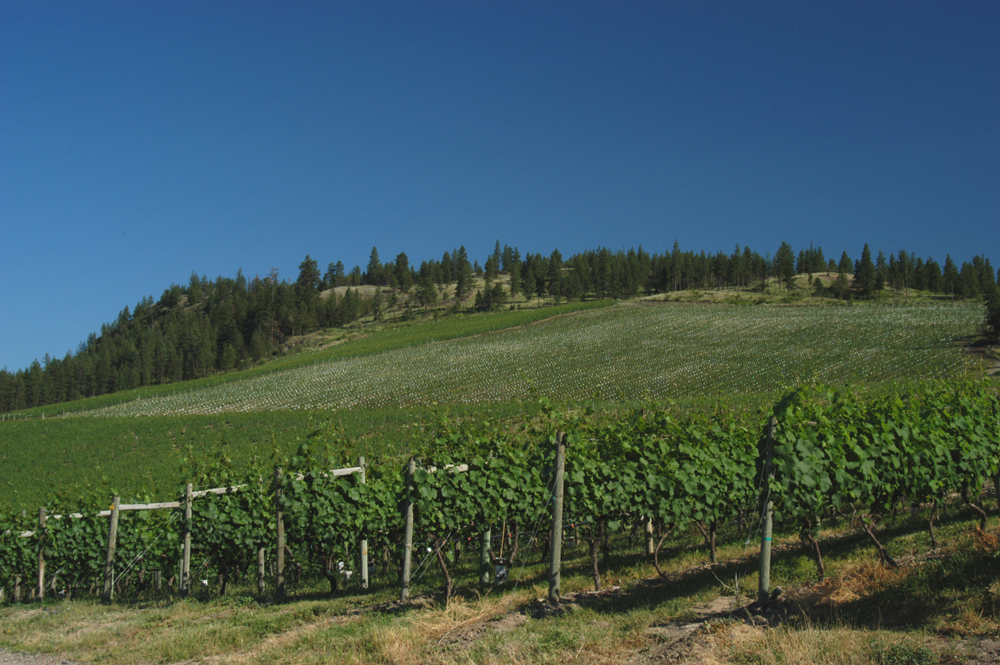
IF YOU GO
Events such as the spring, summer, and fall wine festivals showcase all
that the valley has to offer. Everything from light pinot blancs and oaky
chardonnays to bold reds and fruity blushes (all certified VQAs—Vintner’s
Quality Alliance approval—many of them award winners) adorn tasting
tables and accompany elegant meals created by master chefs. After-dinner
wines (late harvests) round off the feasts, and sweet ice wine, made throughout
the valley and sometimes served in chocolate sipping cups, is one of them.
Wine festivals attract thousands of wine lovers to the Okanagan wineries’
tours, workshops, tasting rooms, and elaborately created dinners accompanied
by, what else…exquisite Okanagan wines!
The scenic Okanagan Valley is one of the largest tourist attractions in
British Columbia. Besides being prime wine country, it boasts hot summers
and sandy beaches; water sports; wildlife viewing such as deer, marmots,
California bighorn sheep, and a wide variety of bird species, among others;
year-round events; art and theatre; sports and recreation; and much, much
more. Located in the interior of BC, it has easy access from Washington
or other areas of Canada. It’s a refreshing change from the big
city, quieter but loaded with fun and adventure.
The valley of wine has it all!
CONTACT NUMBERS
Supernatural British Columbia
1-800-663-6000
BC Wine Information Centre
250-490-2006
BC Wine Institute
250-494-9772
Wine Festival Info
www.TheWineFestivals.com
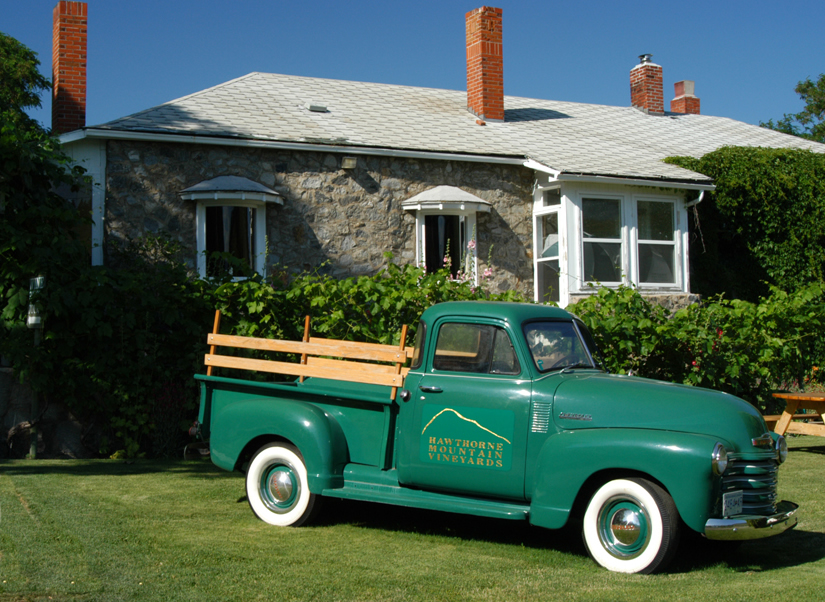
TAKING THE PICTURES
When my fiancé, Phil and I visited the prestigious Hawthorne Mountain
Winery in Okanagan Falls, I was doing a piece on ice wine for Southern
Exposure, a South Okanagan newspaper. It was Christmas Eve day and a chilling
12 degrees F (-11 degrees Celsius) and shrunken bunches of frozen grapes
were being carefully snipped by bundled-up pickers. Holding the camera
was challenging in the cold weather but fingerless gloves helped.
Shooting Hawthorne in the summer months proved to be even more challenging
than in the winter. The Okanagan sun blazed down, pushing temperatures
into the high 90s and sometimes over a 100. Along with the high temperatures,
the lighting was harsh throughout the day and well into the evening.
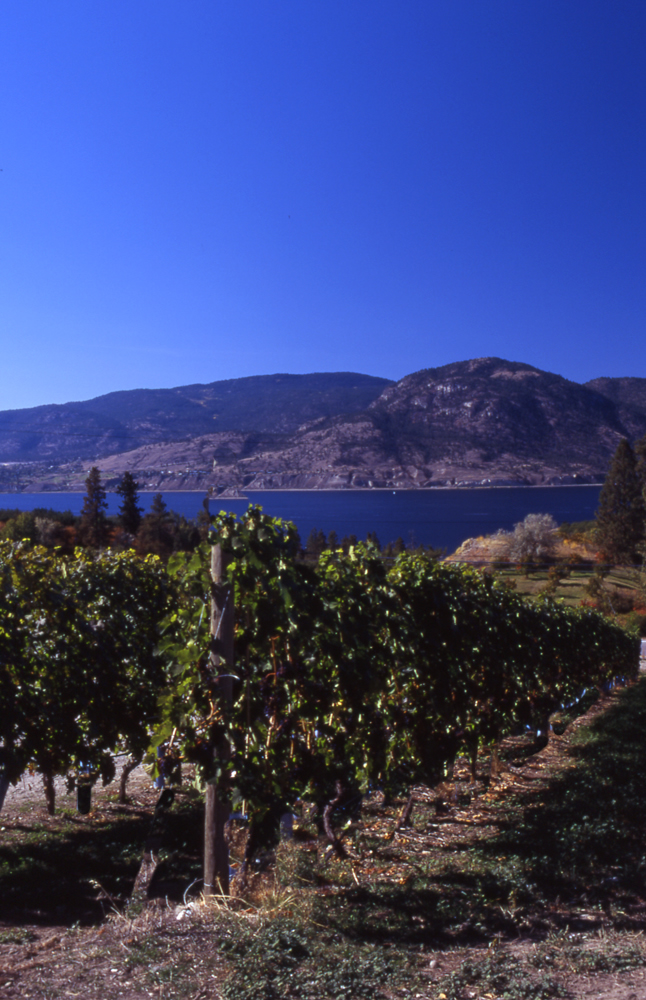
To overcome these lighting conditions, Phil & I used a circular
polarizer on every image we made during the months from June through August,
being extra careful to keep from shooting directly in the sun’s
direction.
In the fall, Phil and I took a visit to award-winning
Hillside Estate Winery to shoot images for future magazine/newspaper articles
and add to our collection of stock photos. 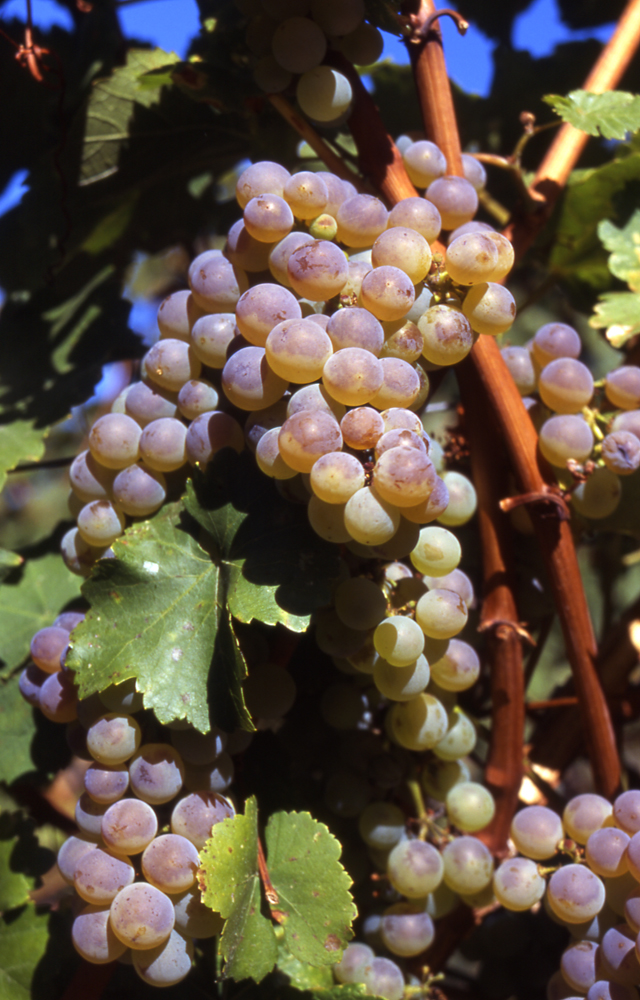
The grapes were ripe and ready to pick (in fact
they were being picked!), and the day was perfect, especially with the
brilliant blue sky and mellower early morning sunshine. There were many
opportunities for making photos aside from the rows of healthy vines and
plump grapes, and I found myself bubbling with excitement as I made the
loop around the winery. (I was using a Nikon 601 with 28-70 mm lens at
the time, just before I graduated to a Nikon F90X and then more recently
to an F80.)
Using Nikon equipment and a Gitzo carbon-fibre tripod for assurance for
many of the scenic shots, I made sure to shoot from different angles while
gathering as many photo subjects as I could find. I carefully recorded
each shot in my exposure book (I’ve always kept one) before moving
on to the next. When shooting the grape pickers, I took the time to take
down their names and chat with them in order to help them feel comfortable
as well as to keep myself prepared for future reference. When the sun
was getting too high in the sky, we took a self-guided wine tour, relaxed
in the cozy bistro for lunch, and then sampled ice wine in chocolate sipping
cups in the tasting room for dessert.
Visiting the wineries was not only fun but informative, and we were able
to do what we love to do: shoot pictures!